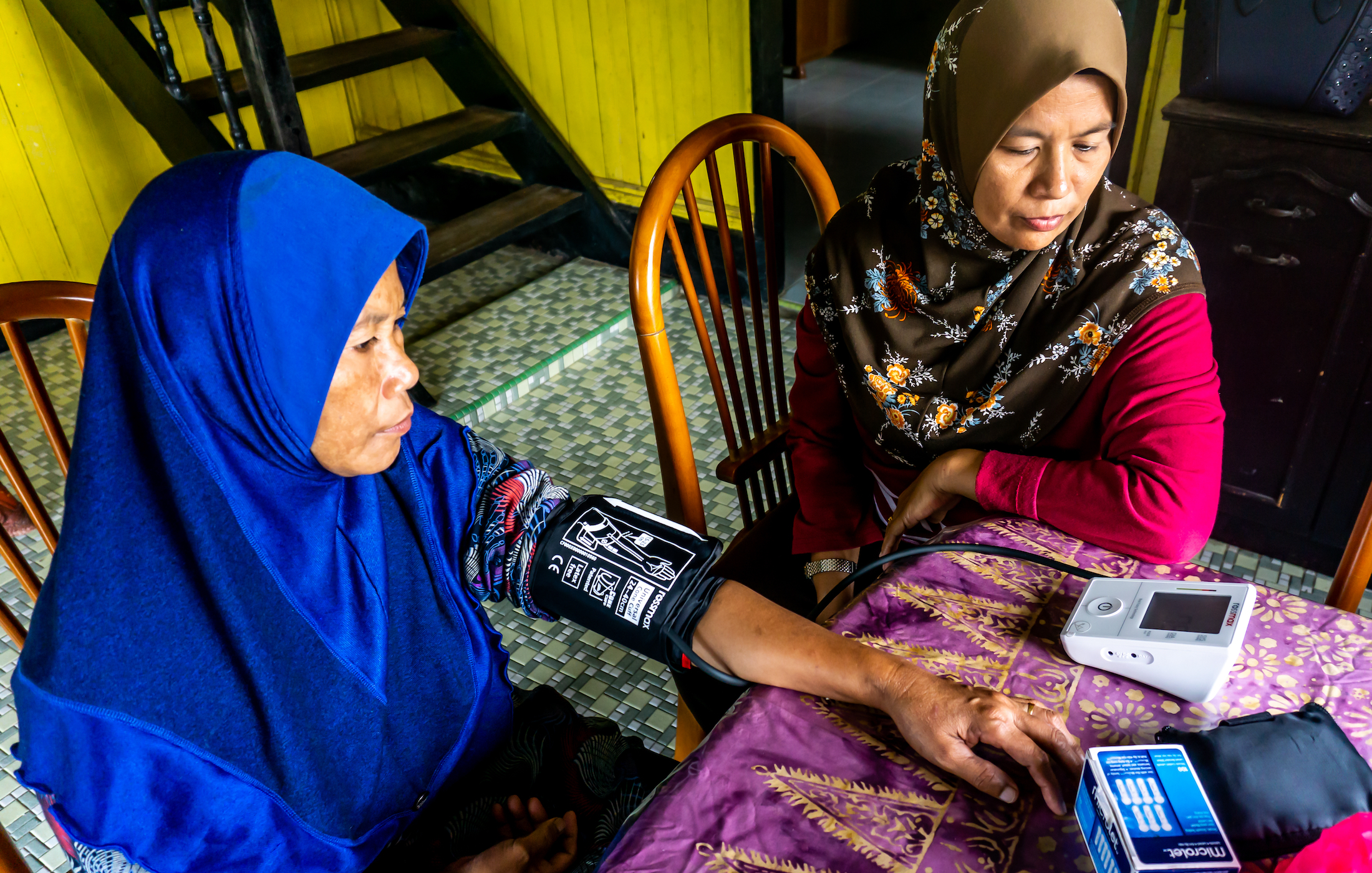Genetics and very often, risk factors such as smoking and unhealthy diets, are key causes of CVD. In 2021, four of five CVD deaths occurred in low- and middle-income countries (LMICs). And once taken ill, families in the most vulnerable communities face exorbitant out-of-pocket expenses, engendering a vicious cycle of compromised health and economic hardship.
Universal Health Coverage (UHC) paves the way for stopping CVD from claiming lives prematurely and for giving societies everywhere the opportunity to thrive. Making care affordable for primary prevention and secondary treatment can avert premature loss of life; for example, hypertension, which caused 10.8 million CVD deaths worldwide in 2021, is a common yet manageable risk factor for CVD.
Confronting the world’s number one killer
How does CVD play out across the globe? That’s what the World Heart Report 2023 set out to map. The eye-opening report is the first in-depth analysis of CVD risk and mortality data worldwide that aids countries in understanding their particular risk factors so that they can take steps to save lives and hundreds of billions of dollars.
The saying “money talks” is emphasised by the findings: the correlation between healthcare investment as a percentage of gross domestic product (GDP) and lower death rates is crystal clear. CVD death rates are higher in countries where people pay more out-of-pocket for healthcare. In line with WHO recommendations, countries must invest at least 5 per cent of their GDP to help bring down CVD death rates and morbidity. Universal Health Coverage (UHC) packages that include primary and secondary care will help reduce CVD incidence, premature mortality, and costs.
UHC: “the key to care”
World leaders have committed to ensuring that everyone has access to healthcare via Universal Health Coverage by 2030. When Heads of State meet in New York in September at the UN General Assembly, they have an opportunity to make good on that promise.
The Road to UHC includes asks that just make sense: expand coverage of essential health services, prioritise prevention, and cover secondary treatment in health benefits packages that everyone can access. For example, early screening for risk factors that include hypertension, lipids such as cholesterol and triglycerides, and glucose are among the most straightforward steps to avert later complications. Digital health interventions and support at pharmacological level and at local clinics are a norm in many parts of the world. Increasing investments in the health workforce and health infrastructure and adding 77,000 primary health care facilities in LMICs are among actions that could help avert millions of deaths.
Since the pandemic, people are increasingly aware of and concerned for their health and the health of their loved ones. The demand for affordable health services that draw on the latest tools and knowledge is growing. Resources such as the WHO PEN package and the HEARTS Technical package offer modules in care and management in primary health care. The medical community is also mobilising to deliver better heart care for everyone— will those who set policy and allocate funding join us?





